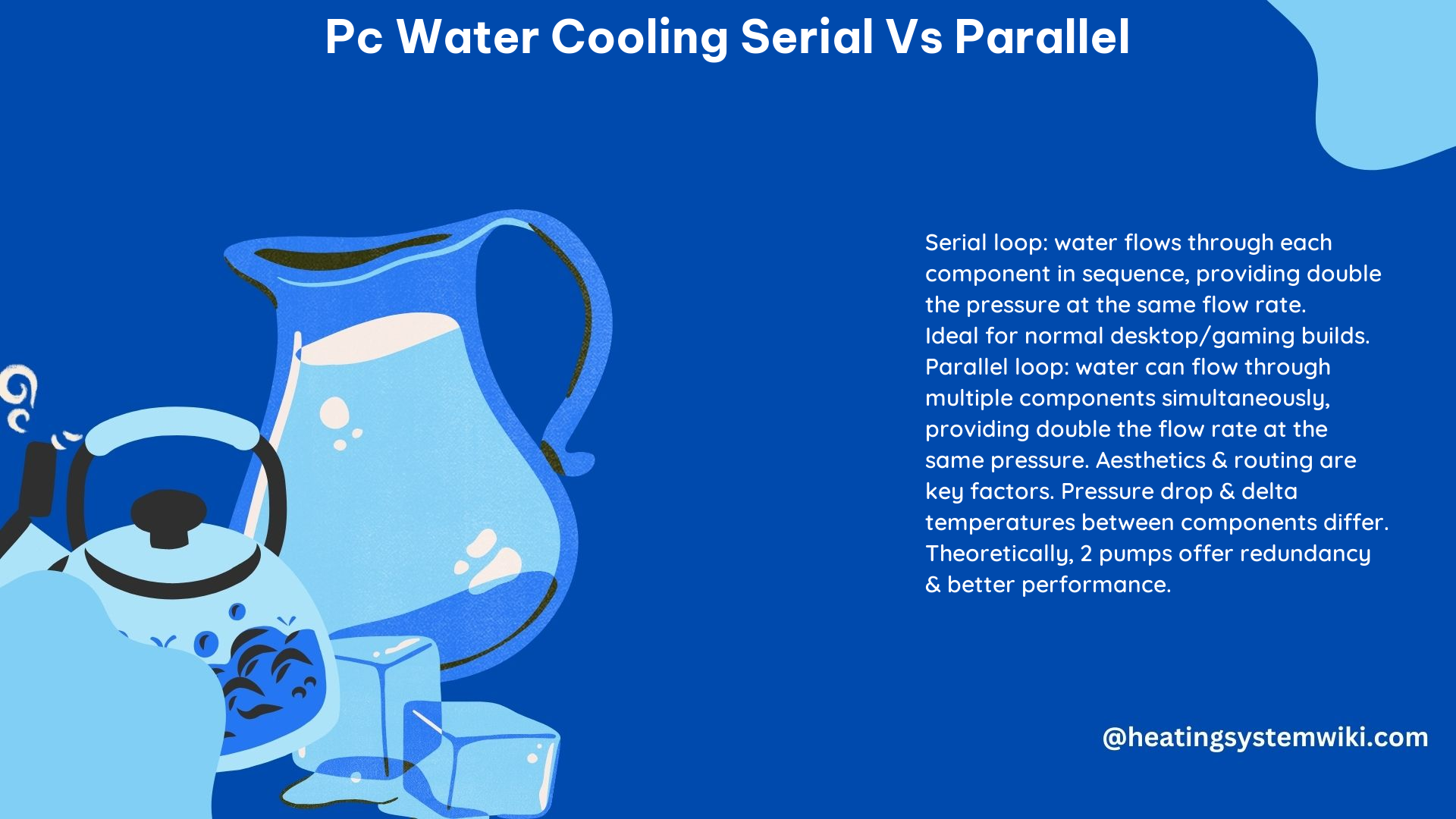In the world of PC water cooling, the choice between a serial or parallel loop configuration is a crucial decision that can significantly impact the performance, aesthetics, and overall efficiency of your cooling system. This comprehensive guide delves into the intricacies of both serial and parallel water cooling loops, providing you with the technical knowledge and data-driven insights to make an informed decision for your next PC build.
Serial Water Cooling Loops
Serial water cooling loops are the most common and straightforward configuration, where the coolant flows through each component in a linear fashion. Typically, the order of components in a serial loop is as follows: reservoir -> pump -> GPU block -> CPU block -> radiators -> reservoir.
Advantages of Serial Loops
- Higher Pressure: Serial loops generally provide higher pressure throughout the system, which can be beneficial for overcoming the resistance of components like CPU and GPU blocks.
- Simpler Design: The linear nature of serial loops makes them easier to plan, route, and install, especially in compact PC cases.
- Better Temperature Consistency: As the coolant flows through each component in sequence, the temperature of the fluid remains more consistent, leading to more uniform cooling across the system.
Disadvantages of Serial Loops
- Lower Flow Rates: Due to the increased resistance in a serial configuration, the overall flow rate may be lower compared to a parallel loop.
- Longer Coolant Paths: The coolant has to travel through a longer path, which can result in higher pressure drops and potentially higher temperatures in the later components of the loop.
Parallel Water Cooling Loops

Parallel water cooling loops, on the other hand, split the coolant flow into two or more separate paths, allowing the fluid to flow simultaneously through different components.
Advantages of Parallel Loops
- Higher Flow Rates: By splitting the coolant flow, parallel loops can achieve higher overall flow rates, which can be beneficial for cooling performance.
- Easier Routing: Parallel loops often allow for more flexible and aesthetically pleasing routing, as the coolant paths can be separated and routed independently.
- Improved Temperature Distribution: The simultaneous flow through different components can help distribute the heat load more evenly, potentially leading to better overall cooling performance.
Disadvantages of Parallel Loops
- Lower Pressure: Parallel loops typically have lower pressure throughout the system, which can be a concern for components with high resistance, such as dense GPU or CPU water blocks.
- Increased Complexity: Parallel loops require more specialized fittings and careful planning to ensure balanced flow distribution across the different paths.
- Potential Flow Imbalance: If the resistance between the parallel paths is not properly balanced, it can lead to uneven flow distribution and suboptimal cooling performance.
Measuring Flow Rate
Accurately measuring the flow rate in your water cooling loop is crucial for evaluating the performance and efficiency of your system. There are two common methods for measuring flow rate:
- Flow Meter: Dedicated flow meters, such as those available from Performance-PCs.com, can provide precise real-time flow rate measurements.
- Bucket Test: A simple bucket test involves measuring the volume of coolant that flows out of the loop in a given time period, allowing you to calculate the flow rate.
Choosing Between Serial and Parallel Loops
The decision between a serial or parallel water cooling loop ultimately depends on your specific needs, preferences, and the constraints of your PC build. Consider the following factors when making your choice:
- Performance Requirements: If you have high-performance components that require robust cooling, a serial loop may be the better option due to its higher pressure capabilities.
- Aesthetics and Routing: If you prioritize a clean, organized look and easier routing, a parallel loop may be the more suitable choice.
- System Complexity: Serial loops are generally simpler to plan and implement, while parallel loops require more specialized components and careful balancing.
- Flow Rate Considerations: If you need to maximize the overall flow rate, a parallel loop may be the better option, but be mindful of the potential pressure drop.
Ultimately, both serial and parallel water cooling loops have their own advantages and disadvantages, and the choice will depend on your specific requirements and preferences. By understanding the technical details and trade-offs of each configuration, you can make an informed decision that will ensure the optimal performance and aesthetics of your PC water cooling system.
